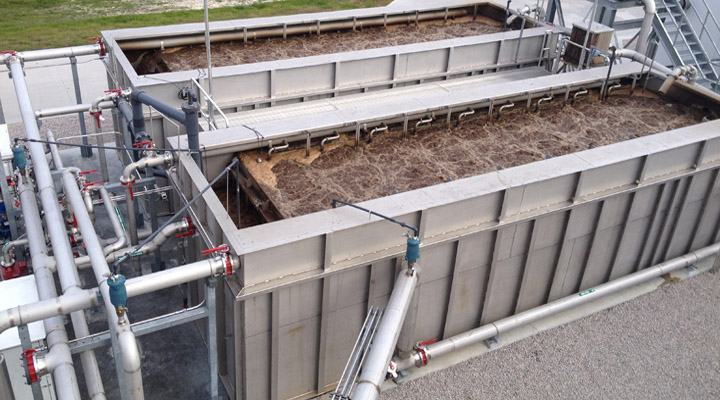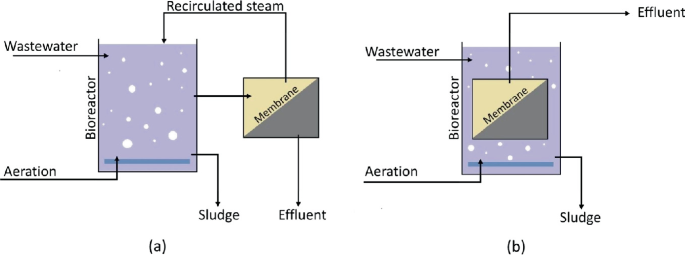Future Trends in Membrane Bioreactor Technology and Its Global Impact
Wiki Article
Understanding Membrane Layer Bioreactors: The Future of Wastewater Therapy
Membrane layer bioreactors (MBRs) represent a significant development in the area of wastewater therapy, incorporating biological procedures with advanced membrane filtering to improve effluent top quality. As worldwide water deficiency and stringent governing structures become progressively pushing concerns, MBR technology uses an efficient feedback through its capability to lessen impact and maximize resource recovery.What Are Membrane Bioreactors?

The core parts of MBR systems include a bioreactor where microbial activity takes place and a membrane layer unit that filterings system the mixed liquor. This dual capability makes it possible for the synchronised deterioration of natural matter and solid-liquid separation in a solitary action. MBRs can run in both submerged and exterior setups, with immersed systems being more common as a result of their small style and functional effectiveness.
The fostering of MBR modern technology has obtained grip in various applications, varying from community wastewater treatment to industrial effluent management. MBRs are specifically useful in situations where area is strict or minimal effluent high quality criteria should be fulfilled. By keeping a high concentration of bacteria within the bioreactor, MBRs enhance the destruction of organic pollutants, therefore generating higher therapy efficiencies compared to standard approaches.
Trick Benefits of MBR Modern Technology
The integration of organic therapy with membrane purification in MBR systems provides countless advantages that establish it aside from typical wastewater treatment techniques. Among the primary advantages is the boosted effluent top quality. MBRs successfully get rid of suspended solids and microorganisms, achieving greater degrees of purification that satisfy rigorous discharge standards and assist in water reuse applications.
An additional significant advantage is the decreased sludge production. MBR systems create less excess sludge, resulting in lower disposal expenses and a decline in ecological impact. The closed nature of the membrane layer system lessens the threat of smell emissions and enhances overall process control.
Finally, MBRs are flexible and versatile, making them appropriate for various wastewater kinds, including industrial and community sources. The ability to integrate with advanced treatment technologies even more boosts their effectiveness, making MBRs a promising solution for the future of wastewater management.
Challenges and Limitations of MBRs
While MBR technology offers numerous advantages, it additionally encounters a number of difficulties and restrictions that can impact its widespread fostering. One substantial obstacle is the high funding and browse around here operational prices related to MBR systems. The first financial investment for membrane materials and the necessary infrastructure can be significant, making it much less available for smaller markets or towns.Furthermore, membrane fouling stays an essential issue that can lessen system performance and increase upkeep demands. Fouling takes place when solids, natural matter, or microbes gather on the membrane layer surface area, leading to lowered permeability and calling for frequent cleansing or replacement.
An additional constraint includes the complexity of the innovation. MBR systems require competent personnel for procedure and maintenance, which can be an obstacle in regions with minimal technical expertise. The disposal of invested membranes provides ecological problems, as the products are typically not eco-friendly and can contribute to squander monitoring challenges.
Finally, while MBRs can efficiently deal with a wide variety of wastewater, they might not be suitable for all applications, especially those with high focus of fats, oils, and oils, necessitating additional research study and development to deal with these restrictions.
Applications of Membrane Layer Bioreactors
In numerous sectors, membrane bioreactors (MBRs) have arised as a functional solution for wastewater treatment (Membrane Bioreactor). Their applications span local, commercial, and agricultural settings, showcasing their versatility and efficiency in varied click here to read settings. In metropolitan wastewater therapy plants, MBRs significantly enhance effluent quality, enabling water reuse and decreasing the ecological influence of released wastewaterIndustrially, MBRs are used in food and beverage processing, textile manufacturing, and pharmaceutical production, where they effectively treat high-strength waste streams. Their capability to handle varying and varying tons contaminant concentrations makes them specifically useful in these industries. Furthermore, MBRs help with the removal of pathogens, put on hold solids, and raw material, adding to compliance with stringent discharge laws.
In farming, MBRs are progressively utilized for dealing with farming overflow and livestock wastewater, enabling the recuperation of nutrients for plant food production. They also you could try here help in the treatment of greywater for irrigation, advertising sustainable water management techniques.
The versatility of MBRs is more confirmed by their combination with various other modern technologies, such as anaerobic digestion and advanced oxidation procedures, enhancing general efficiency and resource recovery in wastewater therapy systems.
The Future of Wastewater Treatment
Innovations in innovation and a growing emphasis on sustainability are forming the future of wastewater therapy. Membrane bioreactors (MBRs) exhibit this shift by incorporating organic treatment procedures with membrane filtering, resulting in high-grade effluent appropriate for reuse. The trend in the direction of round economic situations is prompting centers to embrace MBRs for their capacity to recuperate sources, such as water and nutrients, from wastewater.Developments in membrane layer materials and setup are enhancing the effectiveness and long life of MBR systems, decreasing functional costs and power intake. Smart technology combination, consisting of real-time surveillance and automated control systems, is further optimizing performance and making it possible for anticipating maintenance, thus lessening downtime.
Moreover, regulative stress and social expectations are pushing sectors and towns to embrace even more lasting techniques. Membrane Bioreactor. The shift towards decentralized wastewater therapy remedies is acquiring traction, permitting localized treatment that minimizes transport prices and power use
Conclusion
Membrane bioreactors (MBRs) represent a transformative technique to wastewater therapy, incorporating biological processes with sophisticated membrane layer modern technology. The benefits of MBRs, consisting of boosted effluent top quality, reduced spatial requirements, and lower sludge production, position them as a viable service amidst growing urbanization and stricter environmental policies. In spite of existing difficulties, the continued development in membrane products and functional approaches assures to strengthen the efficiency and fostering of MBRs, ensuring their critical role in the future of lasting wastewater monitoring.Membrane layer bioreactors (MBRs) stand for a significant technology in the area of wastewater treatment, integrating organic procedures with sophisticated membrane filtration to boost effluent top quality.Membrane bioreactors (MBRs) combine organic therapy processes with membrane layer purification to successfully treat wastewater.The integration of organic treatment with membrane purification in MBR systems uses various benefits that establish it apart from conventional wastewater treatment approaches. Membrane bioreactors (MBRs) exemplify this change by integrating organic treatment procedures with membrane filtering, resulting in top quality effluent suitable for reuse.Membrane bioreactors (MBRs) represent a transformative approach to wastewater treatment, incorporating organic processes with advanced membrane technology.
Report this wiki page